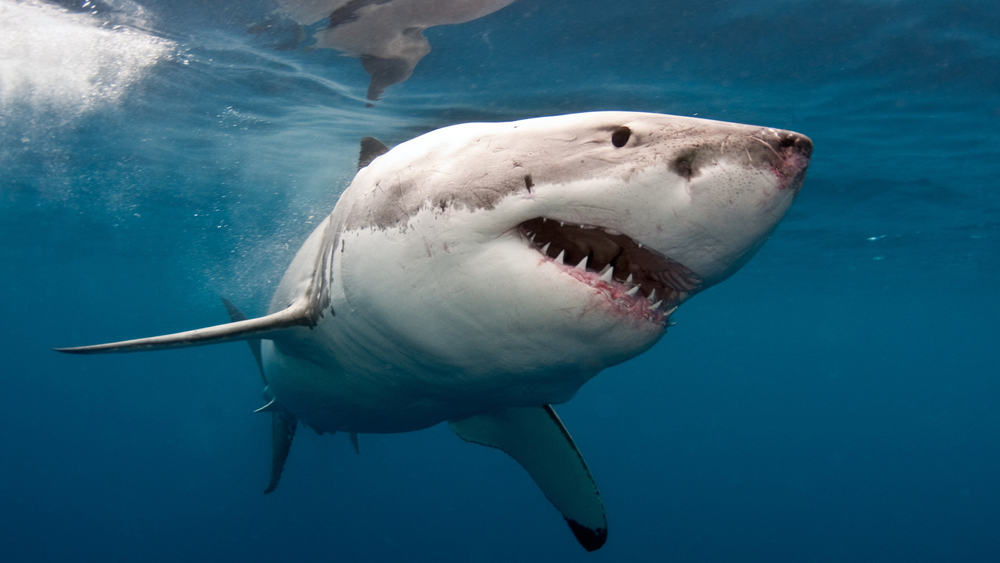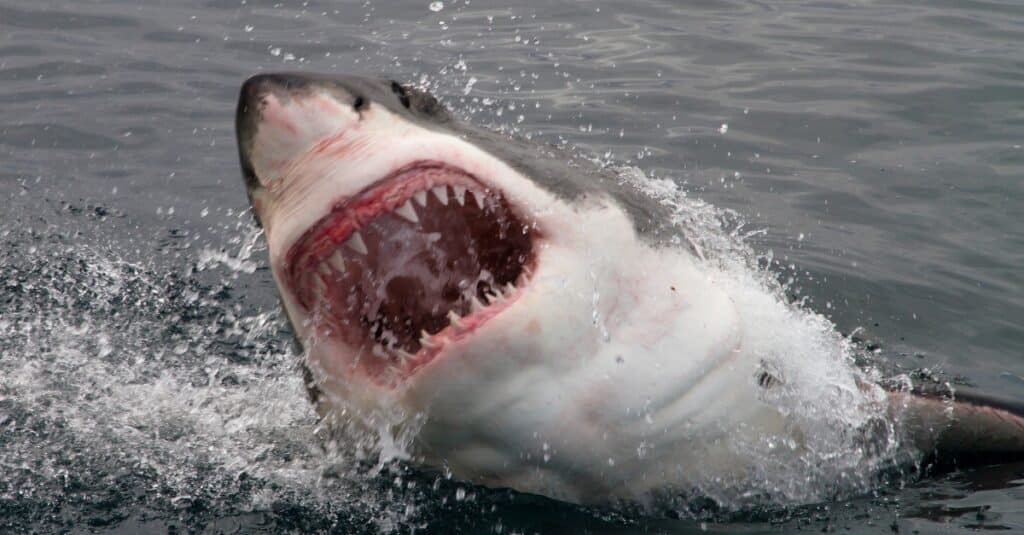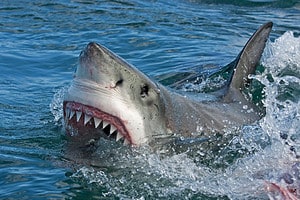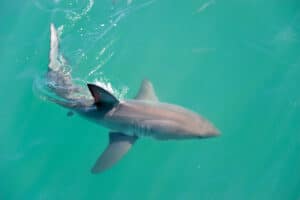Sharks! They are one of the world’s most ferocious and gigantic predators, capable of causing tremendous harm to their prey. These marine creatures are top of the food chain in the marine ecosystem, with the killer whale widely holding the highest rank in the food chain and hunting in packs.
Having over 300 finely pointed teeth, a strong body, and high swimming speed, sharks are responsible for the ridiculous prevalent scare of humans during boat tours in the ocean. What is this prevailing rational fear of sharks called? Are there other interesting facts about sharks to know? Find out more as you dive with us in this article.
What is the Fear of Sharks Called?

Galeophobia is the fear of sharks.
©Unknown/Shutterstock.com
In simple terms, galeophobia is a precise word depicting the fear of sharks. Although sharks are good-looking with firm widebodies and smooth skin, these sea creatures are capable of causing extreme anxiety in humans. Moreover, with the depiction of sharks in Hollywood movies as ravenous vengeful sea monsters, many people with this phobia may consequently be in complete panic even when these sea creatures are safely secured in aquariums.
Why and How Was “Galeophobia” Coined?

Galeophobia was coined from two greek words – “galeos” and “phobos.”
©iStock.com/Peter_Nile
Without mincing words, sharks are endowed with staunch predating features capable of sending fear down the spine of a prospective prey and causing humans to develop a distinctive response at a prank scream of a shark in the ocean, even when they are safe on a boat or ship.
“Galeophobia” came out as a word from two distinct Greek words “galeos” (which refers to sharks with streaks like those on a weasel) and “phobos” (meaning fear). So when joined together as a word, it gives a clear description of the condition when humans give off an anxious demeanor when they contact, see, or think about sharks.
Although the fear of sharks is not entirely irrational, as there have been cases of attacks by sharks, the vast rational anxiousness is influenced by an accumulation of fictional illustrations in movies and false psychologies.
Unlike the other popular phobias common to marine habitats and sea creatures, ichthyophobia (fear of fish) is unlikely to be experienced amongst humans.
Galeophobia: Symptoms and Treatment
Galeophobia is usually accompanied by sporadic anxiousness, rising heartbeat, stress, chest pain, frenzy, bane, and sometimes stomach pain. Unfortunately, when a person has galeophobia, they are quickly plunged into shock, making them experience various health issues, including intense mental stress, trembling, and nausea. These folks can also be so fear-stricken that they can’t help but scream, cry and shy away from staring into the eyes of the ocean predator.
The fear of sharks has become more intense over time, with reports of people experiencing arrhythmia, an irregular heartbeat when they feel threatened in proximity to these predators. Certainly, the effect of pulling a shark prank on the beach or jokingly screaming out the name could cause disorientation and pandemonium. Sadly, this phobia can be experienced on different levels depending on the level of emotional stability inherent in the individual.
However, whatever the case, it is essential to know that a possible way to treat galeophobia as quickly as possible is through exposure therapy. Other quick treatment methods include:
- Acknowledging and accepting that one has a phobia of sharks.
- Learning the facts about sharks.
- Consciously channeling your strength to overcome galeophobia.
- Speaking to someone who understands your phobia.
How to Overcome the Fear of Sharks
Experts suggest that adopting certain cognitive and behavioral techniques can help combat this distorting fear of sharks. Such is aimed at conditioning the individual’s mind to believe that they are superior to the situation. In this case, the individual takes total control over his natural emotions and manipulates his cognitive formation. The individual gradually initiates a mental paradigm shift, migrating their thoughts from anxiety into a more stable physiological condition or state. This is simply a mind game, making yourself believe that you can fight your fear and not get too excited or scared when in such situations.
Below are some of the approaches best adopted to overcome galeophobia;
Cognitive Strategies:
- Rather than plunge into fear, people with galeophobia should transform their reactions into excitement.
- When on the edge of acting out your fear, reaffirm to yourself that you may be acting irrational, especially when you are away from any possible harm.
- At the likelihood of an outburst, it is best to analyze what can be controlled and then take advantage of that knowledge.
Behavioral Strategies:
- It is best to be routinely involved in response exercises that will help checkmate the level of triggers that make you uncomfortable.
- It is also advised for people living with galeophobia and undergoing rehabilitation to involve in controlled stimulations. This rehabilitation process can also be regarded as proctored desensitization. Patients are guided through their least worrisome fears while maintaining emotional responses.
- Patients must practice affirmation thoughts and talks.
Other Fascinating Facts About Sharks

Sharks can live up to 30 years.
©iStock.com/MR1805
- One inseparable fact linked to sharks is that they have cartilaginous skeletons.
- They are widely referred to as elasmobranch fishes.
- They have strong sensory organs that aid them in hearing, smelling, tasting, touching, and seeing.
- Sharks surprisingly find the smell of decaying sharks to be repugnant.
- Sharks can live up to 30 years.
- Not all of these sea creatures have similar dentition.
- The dogfish or mud shark has the longest lifespan, with more than 100 years to explore the ocean.
- Sharks exhibit three brooding patterns: ovoviviparity, oviparity, and viviparity. An example of an ovoviviparous shark is the whale shark, while the horn shark is an example of an oviparous shark. Smoothhounds and requiem sharks are examples of viviparous sharks.
- Contrary to popular opinions that sharks are mammals, sharks are actually fish.
The photo featured at the top of this post is © Ramon Carretero/Shutterstock.com
Thank you for reading! Have some feedback for us? Contact the AZ Animals editorial team.






